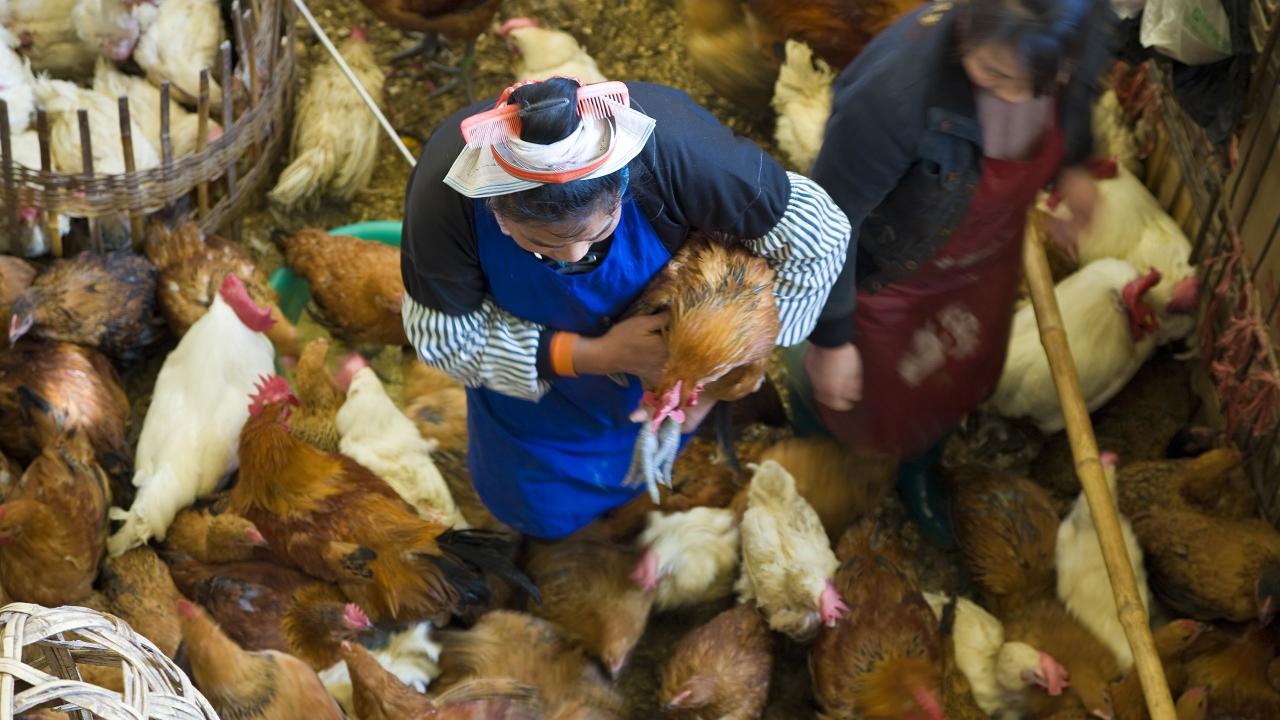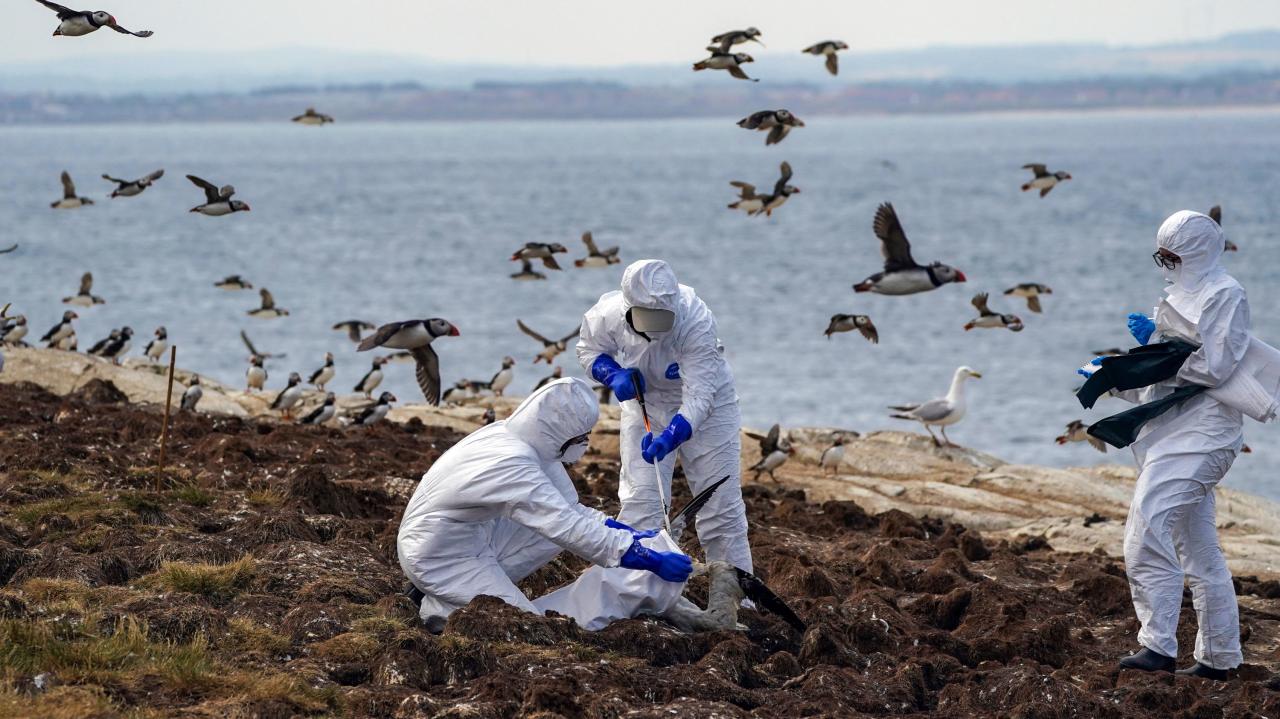Will bird flu be the next pandemic – Will bird flu become the next global pandemic? This is a question that has been on the minds of many people in recent years, as the virus has been spreading rapidly among bird populations around the world. In this article, we will explore the potential for bird flu to become a pandemic, and discuss the measures that can be taken to prevent it.
Bird flu, also known as avian influenza, is a highly contagious viral infection that can affect both birds and humans. The virus is spread through contact with infected birds or their bodily fluids, and can cause a range of symptoms in humans, from mild respiratory illness to severe pneumonia and even death.
Transmission and Spread
Bird flu, also known as avian influenza, is a contagious viral infection that primarily affects birds. However, some strains of the virus have the potential to infect humans, causing a range of symptoms from mild respiratory illness to severe and life-threatening infections.
Bird flu viruses are primarily transmitted through contact with infected birds or their bodily fluids, such as saliva, nasal secretions, and feces. The virus can be spread through direct contact with infected birds, contaminated surfaces, or objects, and through the inhalation of airborne respiratory droplets produced by infected birds.
Potential for Human-to-Human Transmission
While bird flu viruses are primarily transmitted from birds to humans, there have been a limited number of cases of human-to-human transmission reported. These cases have typically occurred in close-knit groups, such as family members or healthcare workers in close contact with infected individuals.
The risk of human-to-human transmission is generally considered to be low, but it is important to take precautions to prevent the spread of the virus.
Geographical Areas of Bird Flu Outbreaks
Bird flu outbreaks have been reported in various geographical areas around the world, including Asia, Europe, Africa, and North America. The virus has been known to cause significant economic losses in the poultry industry, leading to the culling of millions of birds to control the spread of the infection.
Symptoms and Impact
Bird flu, also known as avian influenza, can cause a wide range of symptoms in humans, depending on the strain of the virus and the individual’s health status.
Common symptoms include fever, cough, sore throat, muscle aches, and fatigue. In severe cases, bird flu can lead to pneumonia, respiratory failure, and even death.
Complications and Mortality, Will bird flu be the next pandemic
The mortality rate for bird flu in humans is relatively low, but it can vary depending on the strain of the virus. The H5N1 strain, for example, has a mortality rate of around 60%, while the H7N9 strain has a mortality rate of around 30%.
Economic Impact
Bird flu outbreaks can have a significant economic impact on the poultry industry. In the United States, for example, the 2015 outbreak of H5N2 bird flu led to the loss of over 50 million birds and cost the industry over $1 billion.
Surveillance and Prevention
To prevent the spread of bird flu, it is essential to implement effective surveillance systems and preventive measures. This includes monitoring bird populations for signs of infection, implementing biosecurity measures on poultry farms, and vaccinating poultry to reduce the risk of outbreaks.
Surveillance Systems
Surveillance systems play a crucial role in detecting and tracking bird flu outbreaks. These systems involve monitoring bird populations for signs of infection, such as increased mortality rates, respiratory symptoms, and neurological abnormalities. By collecting samples from sick or dead birds, veterinary authorities can identify the presence of bird flu viruses and determine their genetic characteristics.
Prevention Measures
Preventing the spread of bird flu among poultry and humans requires implementing biosecurity measures on poultry farms. These measures include:
- Restricting access to poultry farms to authorized personnel only
- Implementing strict cleaning and disinfection protocols
- Separating different age groups of poultry to prevent cross-contamination
- Controlling the movement of poultry and poultry products
- Educating farmers and workers about bird flu and its prevention
Vaccination
Vaccination of poultry is an important tool for mitigating the risk of bird flu outbreaks. Vaccines can help to protect poultry from infection or reduce the severity of symptoms, thereby reducing the spread of the virus. Vaccination programs should be tailored to the specific strains of bird flu viruses circulating in a particular region.
Treatment and Research: Will Bird Flu Be The Next Pandemic
Currently, treatment options for bird flu are limited. The primary focus is on supportive care, such as providing fluids, managing fever, and preventing secondary infections.
There are two antiviral medications approved for use against bird flu: oseltamivir (Tamiflu) and zanamivir (Relenza). These medications can help reduce the severity and duration of symptoms, but they are most effective when taken early in the course of the illness.
Ongoing Research
Ongoing research efforts are focused on developing new vaccines and treatments for bird flu. Researchers are working to develop vaccines that are more effective against different strains of the virus, and they are also investigating new antiviral medications that may be more effective than the current options.
Challenges in Developing Effective Interventions
Developing effective interventions against bird flu is challenging due to several factors. The virus can mutate rapidly, which can make it difficult to develop vaccines that are effective against all strains. Additionally, the virus can be transmitted from animals to humans, which can make it difficult to contain outbreaks.
Pandemic Potential
The likelihood of bird flu becoming a pandemic is a matter of ongoing concern among public health officials. While the virus has not yet sustained human-to-human transmission, several factors could contribute to its emergence as a pandemic threat.
Compared to other pandemic viruses like SARS and H1N1, bird flu has a higher fatality rate but a lower transmission rate. However, mutations in the virus could potentially increase its transmissibility and virulence, making it more dangerous.
Factors Contributing to Pandemic Emergence
- Increased contact between humans and infected birds: As bird flu spreads among poultry populations, the risk of human exposure increases.
- Lack of immunity in the human population: Most people do not have immunity to bird flu, making them susceptible to infection.
- Agricultural practices: Intensive poultry farming and live animal markets can facilitate the spread of bird flu between birds and humans.
- Global travel and trade: The rapid movement of people and goods can contribute to the spread of bird flu across borders.
Public Health Preparedness
Governments and health organizations worldwide are taking proactive measures to prepare for a potential bird flu pandemic. These preparations include surveillance, research, vaccine development, and public health campaigns.
Public education and awareness campaigns are crucial in promoting preventive measures and reducing the risk of transmission. These campaigns aim to educate the public about bird flu symptoms, transmission routes, and protective measures such as avoiding contact with infected birds and poultry, practicing good hygiene, and seeking medical attention promptly if symptoms develop.
International Collaboration
Coordinating a global response to a bird flu pandemic presents challenges due to variations in national healthcare systems, resources, and regulations. International collaboration is essential to ensure a unified and effective response. Organizations such as the World Health Organization (WHO) and the World Organization for Animal Health (OIE) play a vital role in coordinating global efforts, sharing information, and providing technical assistance to countries.
Wrap-Up
The potential for bird flu to become a pandemic is a serious concern, and it is important to take steps to prevent it. By taking measures to control the spread of the virus among birds, and by developing new vaccines and treatments, we can help to reduce the risk of a bird flu pandemic.
FAQ Explained
What is bird flu?
Bird flu, also known as avian influenza, is a highly contagious viral infection that can affect both birds and humans. The virus is spread through contact with infected birds or their bodily fluids, and can cause a range of symptoms in humans, from mild respiratory illness to severe pneumonia and even death.
What are the symptoms of bird flu?
The symptoms of bird flu in humans can vary depending on the severity of the infection. Mild cases may only cause mild respiratory symptoms, such as a cough, sore throat, and runny nose. More severe cases can cause pneumonia, difficulty breathing, and even death.
How is bird flu spread?
Bird flu is spread through contact with infected birds or their bodily fluids. This can happen through direct contact with an infected bird, or through contact with contaminated surfaces or objects.
Is there a vaccine for bird flu?
There are currently no vaccines available to protect humans from bird flu. However, there are several vaccines available to protect birds from the virus.
What can I do to prevent bird flu?
There are several things you can do to help prevent bird flu, including:
- Avoid contact with wild birds, especially if they are sick or dead.
- Cook poultry and eggs thoroughly before eating them.
- Wash your hands frequently with soap and water.
- Avoid touching your eyes, nose, or mouth.



